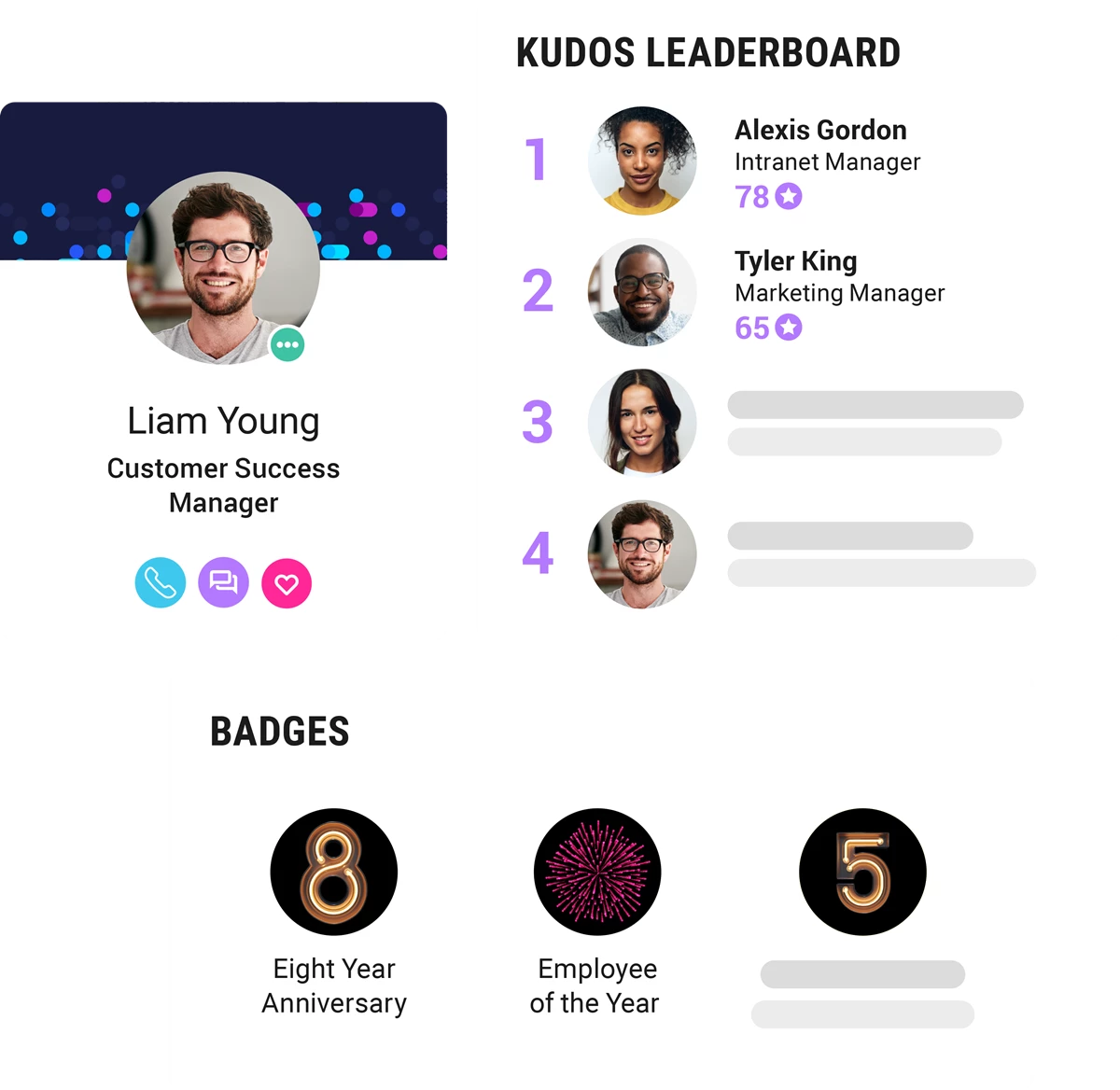Fuel a culture of employee recognition with custom badges that celebrate employees and their successes. Incentivize competition with leaderboards, and let your employees thank each other with peer-to-peer recognition.

"Our intranet has a high degree of engagement and readership - we're really seeing our community come alive."
"We needed the design to be super elegant and the UX had to be really strong. It needed to be multi-sensory so users want to reach out and touch it, then talk about it and use the social features to take that message, and what they've learned, and share it with other employees."
"Unily has great search capabilities, contemporary design, is viewable on any device and soon will allow us to reach employees in our distribution centers, labs, and transport networks for the first time. It’s a real game changer for us."
Give top-down employee recognition a facelift with badges mapped to your organizational goals. Spotlight employees and bring your brand values to life with custom badges that embody your company values. Celebrate great work, career milestones, unique skills, and reward significant contributions, setting a standard for excellence.
Putting a face to a name is easy with Unily’s searchable user profiles. Employees are able to highlight and be recognized for their unique accomplishments and accreditations within the platform. They can also use the employee recognition software to easily identify colleagues that are first-aiders, mentors or product specialists with ease.
Promote the link between employee recognition and rewards through Unily’s extensibility. Keep everything in one place and aligned with your brand by integrating existing technology or rewards programmes into the Unily employee recognition platform.
Nurture an inclusive culture with mobile reward and recognition capabilities. Recognize your frontline heroes, and award badges and kudos on the fly from the mobile app. Reduce silos and improve collaboration through accessibility for all employee’s, wherever they may be.
Let your people select their own champions from around the business and discover who is going the extra mile in your business. Inspire friendly competition with points leaderboards that spotlight your top performers based on their colleague perceptions.
Bake recognition into your culture by empowering your people to reward each other. Enable peer-to-peer recognition with Kudos points that stack up to reveal your real champions across the business.
Employee recognition is all about how companies demonstrate an awareness of an employee’s contributions. It can also be referred to as ‘social recognition’. This can take a variety of forms, from fully fledged rewards & recognition programs to the more subtle managerial shout-outs. Some companies may also include monetary rewards or equivalent prizes. Creating a culture within your enterprise where employees feel recognized and rewarded for their hard work, is proven to improve performance and retention.
Employee recognition software refers to any technology to aid the recognition and rewards given to employees. This can include automated recognition for pre-defined goals like passing probation, completing a project, or passing an exam. It can also use technology to provide an easy and consistent way for employees to give peer-to-peer recognition to one another, helping build a culture of collaboration within an organization.
At Unily we take employee recognition seriously. Rewards and recognition within an enterprise is proven to improve employee engagement, retention, and performance. Our employee recognition platform includes top-down and peer-to-peer recognition with the use of points that tie directly to your brand values. Create badges to recognise key achievements like time in service, employee of the month, or first-aider. A good enterprise employee recognition platform should be quick and easy to use, be accessible on any device, and be consistent across regions and languages.
The relationship between employee rewards and recognition, and employee retention is clear. According to research 44% of employees switch jobs because of not getting adequate recognition for their efforts. With teams more spread out than ever before, saying thanks doesn't always come naturally. In the new era of flexible work, one of the ways progressive leaders can look to counter mass resignations and boost culture is by investing in digital rewards and recognition.
The platform trusted by the largest workforces to deliver world-class employee experience.
British Airways is the UK's largest international airline and one of the world's leading global premium carriers. Operating one of the most extensive international scheduled airline route networks, BA carries almost 40 million customers a year to more than 70 different countries.
In 2014, Pitney Bowes began to re-imagine its business and a big part of that was a complete re-brand. To keep employees informed during this period of transition, it needed a new intranet to engage employees – fast.
dormakaba's award-winning intranet story is an amazing example of what is possible with Out-of-the-Box intranet solutions. In just 6 weeks, the security giant was able to launch a feature-rich social intranet that was ready to support 16,000 global employees through a period of extreme change brought about by a historic merger.











